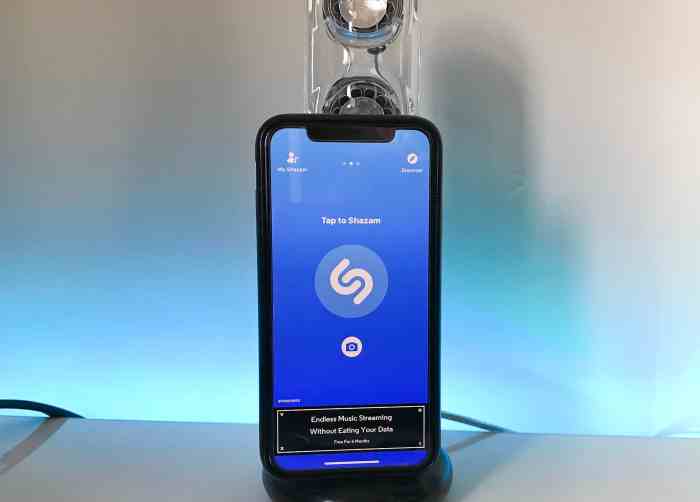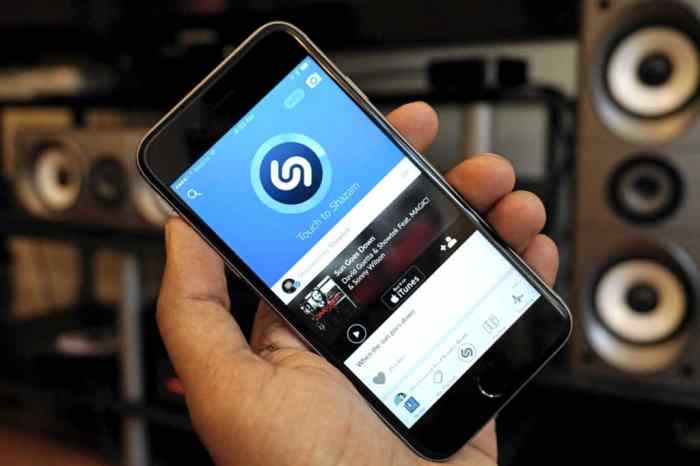Apple’s Acquisition of Shazam
The acquisition of Shazam by Apple in 2018 marked a significant milestone in the music industry, intertwining the worlds of music discovery and streaming. This move solidified Apple’s position as a dominant force in the music ecosystem and demonstrated the company’s commitment to enhancing the user experience within its Apple Music platform.
Historical Context of the Acquisition
The acquisition was a culmination of a long-standing relationship between Apple and Shazam. Shazam had initially launched in 2002 as a mobile app that allowed users to identify songs playing in their surroundings by holding their phones to the sound source. Over the years, the app gained immense popularity, becoming a widely used tool for music discovery and engagement.
- Early Years: In 2014, Apple and Shazam began collaborating by integrating Shazam’s song identification feature into Siri, Apple’s virtual assistant. This integration allowed users to identify songs through voice commands, further enhancing the user experience.
- Strategic Partnership: This partnership laid the foundation for a deeper relationship between the two companies. As Apple continued to invest in its music streaming service, Apple Music, the acquisition of Shazam became a strategic move to enhance the platform’s capabilities.
Financial Aspects of the Deal
The acquisition of Shazam by Apple was a cash transaction valued at approximately $400 million. This acquisition price reflected the significant value of Shazam’s user base, brand recognition, and technological capabilities.
- Market Share: Shazam boasted a substantial user base, with over 1 billion downloads globally. This extensive reach provided Apple with access to a vast audience of potential Apple Music subscribers.
- Data and Insights: Shazam’s vast database of music information, user preferences, and listening habits offered valuable insights into music consumption trends. This data could be leveraged by Apple to personalize recommendations and enhance the overall Apple Music experience.
- Technology and Innovation: Shazam’s advanced audio recognition technology, coupled with its expertise in music discovery, presented a valuable asset for Apple. This technology could be integrated into Apple Music to enhance its search and recommendation capabilities.
Shazam’s Core Functionality and its Integration with Apple Ecosystem
Shazam’s core functionality lies in its ability to identify songs, TV shows, and commercials with incredible speed and accuracy. The app’s user-friendly interface and seamless integration with Apple’s ecosystem have made it a popular choice for music lovers and casual listeners alike.
Integration with Apple Music
Shazam’s integration with Apple Music allows users to instantly add identified songs to their libraries. This feature provides a convenient way to discover new music and expand their musical horizons. Users can also access lyrics, artist information, and related albums directly within the Shazam app, further enhancing their music discovery experience.
Integration with Siri
Shazam’s integration with Siri allows users to identify songs using voice commands. By simply saying “Hey Siri, what song is this?” while a song is playing, users can instantly access information about the song. This feature makes Shazam even more accessible and convenient for users on the go.
Enhanced User Experience
Shazam enhances the user experience within Apple products and services by providing a seamless and intuitive way to discover and enjoy music. The app’s ability to identify songs quickly and accurately makes it a valuable tool for music lovers, while its integration with Apple Music, Siri, and other services provides a streamlined and convenient experience. For instance, when a user identifies a song using Shazam, the app can automatically add it to their Apple Music library, creating a seamless flow between music discovery and consumption.
Impact on the Music Industry and Competition: Apple To Acquire Shazam
Apple’s acquisition of Shazam has sparked discussions about its potential impact on the music industry. The acquisition has raised questions about the future of music discovery, competition among streaming services, and the role of artists and labels in the evolving music ecosystem.
The Competitive Landscape Before and After the Acquisition
The acquisition has significantly altered the competitive landscape in the music streaming industry. Prior to the acquisition, Spotify held a dominant position in the market, followed by Apple Music and Amazon Music. Shazam, with its user base and music recognition technology, offered a valuable tool for music discovery, potentially giving Apple Music an edge over its competitors.
- Spotify: Spotify was the leading music streaming service, boasting a massive user base and a robust catalog of music. Its focus on curated playlists and personalized recommendations made it a popular choice for music lovers.
- Apple Music: Apple Music aimed to compete with Spotify by offering a curated library of music, exclusive content, and a user-friendly interface. The acquisition of Shazam gave Apple Music a powerful tool for music discovery, potentially boosting its user base and market share.
- Amazon Music: Amazon Music, integrated with Amazon’s vast ecosystem, offered a competitive streaming service with a growing library and features like unlimited music storage. The acquisition of Shazam presented a challenge for Amazon Music, as Apple Music could leverage Shazam’s technology to enhance its user experience.
Data and Privacy Considerations
The acquisition of Shazam by Apple raised significant concerns regarding user data and privacy. While both companies had established privacy policies, the integration of Shazam’s data collection practices into Apple’s ecosystem sparked debate about the potential implications for user privacy.
Data Sharing and User Privacy
The integration of Shazam into Apple’s ecosystem involved the sharing of user data between the two companies. Shazam’s data collection practices, which included collecting information about users’ music listening habits, location data, and device information, became subject to Apple’s privacy policies.
Before the acquisition, Shazam’s privacy policy stated that the company collected user data for various purposes, including providing personalized recommendations, improving its services, and delivering targeted advertising. Apple, on the other hand, had a more stringent privacy policy, emphasizing its commitment to user privacy and data security.
The acquisition raised concerns about how Apple would handle the data collected by Shazam. Some users worried that Apple might combine Shazam’s data with its own data, creating a more comprehensive profile of users’ online activities and preferences.
Apple’s acquisition of Shazam could lead to a more comprehensive understanding of user behavior, potentially enabling more targeted advertising and personalized experiences.
This potential data aggregation could enhance Apple’s ability to target advertising and personalize user experiences across its platforms. However, it also raised concerns about the potential for misuse of this data and the erosion of user privacy.
Future Prospects and Implications
The acquisition of Shazam by Apple has opened up a world of possibilities for both companies. With Apple’s vast resources and Shazam’s unique music identification technology, the future holds exciting possibilities for music discovery, consumption, and the overall user experience.
Potential New Features and Integrations, Apple to acquire shazam
The integration of Shazam’s technology into Apple’s ecosystem can lead to a plethora of new features and enhanced functionalities. Imagine a future where Shazam seamlessly integrates with Apple Music, Siri, and other Apple devices, revolutionizing the way users interact with music.
- Enhanced Music Discovery: Shazam’s ability to identify songs instantly could be leveraged to create personalized music recommendations within Apple Music. Imagine a feature that suggests songs based on your Shazam history, or even automatically adds new tracks to your library based on your listening habits.
- Seamless Song Recognition: Apple could integrate Shazam’s song identification capabilities into Siri, allowing users to ask Siri “What song is this?” and instantly get the answer. This would eliminate the need for users to manually open the Shazam app.
- Augmented Reality Experiences: Apple could combine Shazam with augmented reality (AR) to create interactive music experiences. Imagine pointing your iPhone at a concert poster and seeing a virtual stage come to life, or using AR to visualize lyrics while listening to a song.
Apple to acquire shazam – The acquisition of Shazam by Apple marked a significant turning point in the music industry. It not only demonstrated Apple’s ambition to dominate the music streaming market but also raised questions about the future of music discovery and consumption. With Shazam’s powerful technology integrated into Apple’s ecosystem, the future of music is poised to be more immersive and personalized than ever before.
Remember when Apple acquired Shazam? It was a big deal, right? Well, it seems like the music industry is full of surprises these days, and not all of them are good. Just like that Twitter bug that let people post tweets with 35,000 characters twitter bug 35000 character tweet , things can change quickly, and we’re left wondering what’s next for music discovery and social media.
 Standi Techno News
Standi Techno News

